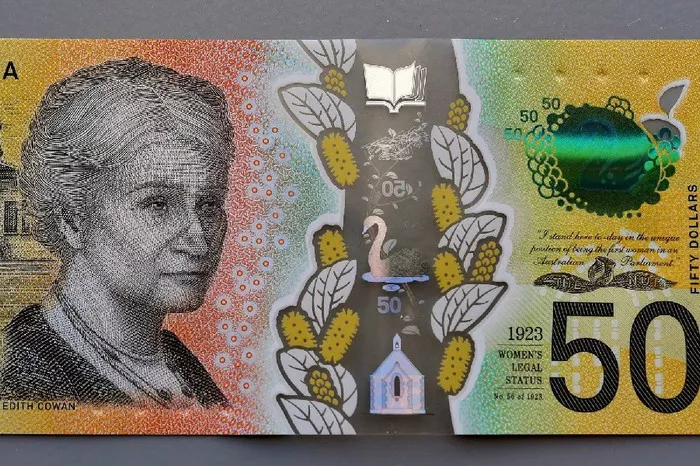The Australian $100 note, a key denomination in the country’s currency system, has undergone significant transformations since its introduction. These changes are driven by advancements in security technology, the need to stay ahead of counterfeiters, and the Reserve Bank of Australia’s (RBA) commitment to maintaining the integrity of the national currency. This article explores the history, design, security features, and recent changes to the Australian $100 note, providing a comprehensive overview of its evolution.
Historical Context
The Australian $100 note was first issued on March 1, 1984, as part of the broader transition from paper to polymer banknotes that began in the late 1980s. Australia was a pioneer in adopting polymer notes, with the primary aim of enhancing durability and incorporating advanced security features that paper notes couldn’t support.
The initial design featured prominent Australian figures: Sir Douglas Mawson, an Antarctic explorer, and John Tebbutt, an astronomer. This design remained relatively unchanged for over three decades, underscoring the importance of these historical figures in Australian culture and history.
Transition to Polymer Notes
In 1996, the RBA introduced polymer notes, a revolutionary move that marked Australia as the first country to fully transition to polymer-based currency. Polymer notes are more durable, secure, and resistant to counterfeiting than their paper counterparts. The move was a significant leap forward in currency technology, setting a precedent for other nations to follow.
The transition was gradual, beginning with lower denominations and culminating with the $100 note in 1996. The new polymer $100 note retained the images of Mawson and Tebbutt but incorporated several advanced security features unique to polymer substrates.
Design and Features of the Polymer $100 Note
The polymer $100 note introduced in 1996 included a variety of security features designed to make counterfeiting extremely difficult. Some of these features included:
Clear Windows: One of the most distinctive features of Australian polymer notes is the transparent window, which includes intricate designs that are hard to replicate.
Optical Variability: The notes incorporate elements that change color or design when viewed from different angles.
Microprinting: Tiny, difficult-to-replicate text that can only be seen clearly with a magnifying glass.
Tactile Features: Raised printing allows visually impaired individuals to identify the denomination by touch.
Recent Changes and Upgrades
In recent years, the RBA has embarked on a comprehensive upgrade of all Australian banknotes, including the $100 note. This Next Generation Banknote (NGB) program aims to incorporate the latest in security technology while also refreshing the design to reflect contemporary Australia.
The updated $100 note, released into circulation in 2020, includes several new features:
Updated Portraits: The note retains Mawson and Tebbutt, but with updated portraits that offer more detail and a modernized look.
Enhanced Security Features: New security features have been added, such as a top-to-bottom clear window containing a number of dynamic elements, a flying owl that moves its wings, and a reversing number that changes when tilted.
Improved Accessibility: Raised bumps in a specific pattern help visually impaired individuals identify the note more easily.
Cultural Depictions: The note incorporates depictions of Australian flora and fauna, reflecting the country’s rich biodiversity.
Security Enhancements
The primary driver for the recent changes to the $100 note has been advancements in anti-counterfeiting technology. The RBA has introduced several cutting-edge security features to stay ahead of counterfeiters:
3D Elements: The top-to-bottom window includes a three-dimensional image of a flying owl, which appears to flap its wings when the note is tilted. This feature is particularly challenging to replicate and provides a quick and easy way for the public to authenticate their banknotes.
Reversing Numbers: Numbers in the clear window that change direction when the note is tilted add another layer of difficulty for counterfeiters.
Microprint and UV Features: Enhanced microprinting and ultraviolet features that are easily identifiable by machines but difficult for counterfeiters to reproduce.
Holographic Features: Advanced holographic elements that shift and change when viewed from different angles provide an additional layer of security.
Public Reception and Impacts
The introduction of the updated $100 note has been met with positive reception from the public and industry stakeholders. Users have praised the improved durability and enhanced security features, which provide greater confidence in the currency.
From an economic perspective, the new note has helped reduce the incidence of counterfeiting. According to the RBA, the rate of counterfeit $100 notes has decreased significantly since the introduction of the NGB series. This reduction not only saves costs associated with dealing with counterfeit currency but also strengthens public trust in the monetary system.
Challenges and Considerations
While the transition to the new $100 note has been largely successful, it has not been without challenges. Businesses and financial institutions had to update their machinery and processes to accommodate the new notes. This included recalibrating ATMs, vending machines, and other cash-handling equipment to recognize and process the updated currency.
Additionally, there was a need for public education to ensure that everyone, from consumers to retail workers, could recognize and authenticate the new notes. The RBA conducted extensive outreach programs, including advertising campaigns and informational materials, to facilitate this transition.
Conclusion
The Australian $100 note has seen significant changes since its inception, reflecting advancements in technology and a commitment to maintaining currency integrity. The transition from paper to polymer notes in the 1990s was a groundbreaking move that set a global standard. The recent upgrades under the Next Generation Banknote program continue this legacy, incorporating cutting-edge security features and updated designs that resonate with contemporary Australia.
These changes underscore the importance of evolving currency design to combat counterfeiting and enhance usability. The RBA’s proactive approach ensures that Australian banknotes remain among the most secure and durable in the world, providing confidence and convenience to all users. As technology continues to advance, further innovations in currency design are likely, ensuring that the Australian dollar remains a robust and trusted medium of exchange.


